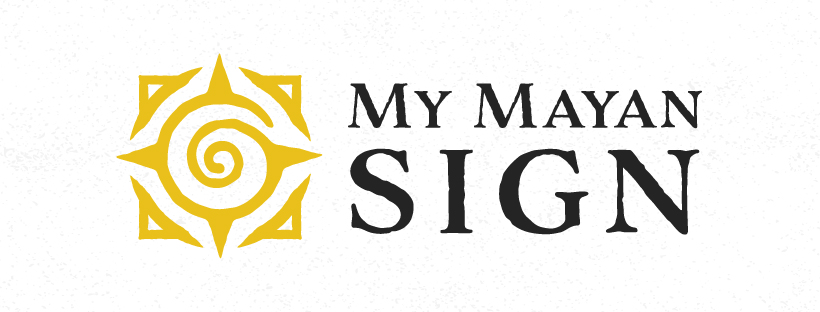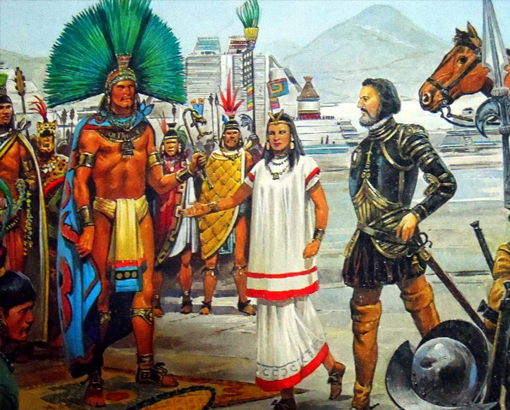Welcome to Part 4 of our thought-provoking series “Conquest of America” by contributing writer Michal Pawles.
Most of us have heard of the Spanish conquistadors conquering the Maya, Aztec and Inca Civilizations. We can get the impression that the conquest of America was immediate. Several dozen years after Europeans arrived in the new world. The three most powerful Civilizations, which were at a high level of cultural, social and economic development, were conquered by a group of Westerners. But was it really so?
This series of articles explores the Spanish conquest of America, presenting to readers the conquest from the perspective of Europeans and Native Americans, so as to show this period impartially.
If you’d like to start from the beginning, read Part 1, Part 2 and Part 3.
The Paradox of The Knights of Saint James [Part 4]
The previous 3 articles in this series had described the process of the Spanish conquest of America.
The Aztec, Maya, and Inca empires were absorbed by the Spanish Empire. The culture of indigenous cultures was systematically destroyed and indigenous people were treated as cheap labor.
It often happened that the indigenous leaders helped the conquistadors in their conquests, which is an expression of the diversity of the times of discovering a new world and it is not easy to define who was good or bad.
In this article, I will briefly describe the fate of the Indians after their conquests and what remains of the pre-Columbian Empires until today.
Anomie
‘’Anomie may evolve from conflict of belief system and causes breakdown of social bonds between an individual and the community’’
The indigenous American people were peaceful towards the world and lived in harmony with nature. For example, in 1503, Vespucci (Italian-born merchant, explorer, and navigator) described that the natives did not own property and shared all things. They lived without a king, and everyone was a Lord to himself.
Pedro Vaz de Caminha (Portuguese knight, first chronicler of Brazil) described that the innocence of Adam himself (the first man) was no greater than that of the natives.
Such descriptions of the natives emphasized their kindness and gentleness.
Bartolomé de las Casas (Spanish landowner, friar, priest, and bishop, famed as a historian and social reformer) described that the native gentleness, simple disposition, lack of armament, and nakedness of the Indians gave the Spaniards the boldness to hold them in low esteem, oppress them and drive them to hard work.
The main goal of the colonizers was to earn money thanks to the Indians working for them.
The colonizers were given land and indigenous allowances called Encomienda. Officially, the indigenous people were free but had to do forced labor for free for the Spaniards.
In 1512, the Laws of Burgos (Leyes de Burgos) were proclaimed, the first codified body of laws to regulate the conduct of the Spaniards in America. Particular emphasis was placed on behavior towards the indigenous people of the colonized continent. In these laws, we can read that after five months of work for the Spaniards, for the next forty days the Indian could work for himself. However, during these forty days, the Native American was constantly being evangelized.
The Spaniards made slaves of the Indians because it just paid off. It was a payment to the conquistadors for their risk in the conquest of America.
At that time, the Catholic Church played a positive role. Gerónimo de Mendienty (A franciscan missionary in Mexico) proposed that all the indigenous peoples be governed by monks through a modified version of the monastic rule. This was against the policy of sourcing cheap labor from the local Indians, so his plans were not implemented.
However, a similar plan was implemented by the Jesuits in what is now Paraguay, Brazil, and Argentina. They created Reductions, Indian communities governed by the Jesuits.
The purpose of Church-led reductions was to convert Indians to Christianity and to protect them from slavery or work in the serfdom Encomienda system. In addition to evangelistic goals, the reductions played a cultural and civilization role, which was implemented in the form of teaching Indians to work in the land, perform simple crafts and lead a sedentary lifestyle. The Indians living in these settlements had to follow a strict regime imposed by the monks. However, Native Americans in reductions were treated like humans compared to Encomiendas, where they were treated as commodities to earn money.
The reductions were aimed at teaching Indian social life, eliminating nomadism, education for work, and learning the craft.
A church was built in the center and apartments around it. Children went to school and men and women went to work. The women sewed, weaved, and helped the men in the fields work. The men grazed livestock, hunted, fished, and worked in the fields, but also included doctors, painters, sculptors, bricklayers, carpenters, gold, silver, and precious stone processing workers, and people who made musical instruments such as harps and guitars.
The aristocratic elite of the Aztecs, Maya, and Incas adapted to the new situation that arose after the conquests. The indigenous aristocratic families often remained local leaders and received titles and administrative positions from the Spanish crown. The Mayan King Pablo Paxbolon was also Governor of the Yucatan Colony and led the expansions of Spain. Dynasties such as the Cocom, Pech, and Xiu remained the most powerful local families in the Yucatan for hundreds of years after the conquest.
In the Rombamba region of the colonial Quito (the capital of Ecuador), the former Inca family of Duchisel managed to take over the rule of the city of Yaruquies and amass a large fortune. The Indians adapted to new conditions and political and technological changes.
Despite the large decline in the indigenous population, the local culture did not collapse, nor did the culture of Europe collapse during The Black Death (medieval pandemic)
Indigenous cultures during the colonial period evolved all the faster and more radically through exposure to Spanish culture.
The Old Eagle has defeated Rattlesnake
From the Aztec, Maya, and Inca empires, monumental buildings have survived to our times and traditions have survived in indigenous communities. But can we say that the descendants of the Inca, Maya, and Aztecs can feel at home in Mexico and Peru?
The conquest has changed the image of America irreversibly, but the fact is that the descendants and traditions of pre-Columbian civilization have a greater influence on the culture and organizations of the modern states of Mexico, Peru, and Guatemala than the indigenous Indian population in the United States, where they still live on Indian reservations.
Spirituality, beliefs, and prejudices, although understood in various ways, still play an important role in the everyday life of people in countries, despite the fact that the vast majority of citizens are not native Indians but Mestizas (person of combined European and Indigenous American descent).
For example, in Mexico, the assassins of the Mexican Drug cartels made sacrifices for death, which was to bring them success in their plans.
The shamans who continue the knowledge of pre-Columbian priests have also survived to this day in Mexico. It is worth recalling because in Europe it is not easy to identify Celtic, Slavic and Germanic priests, whose roots go back to the pre-Christian period.
Therefore, over the years, despite the fact that the indigenous Indians did not remain much, and as a population, they do not play much political importance today. Their ancestral culture survived, for example, in Mexico.
In the previous articles of this series, I have described the organizational system of the Aztec and Maya Empires. I compared both empires to the Delian League (which was an association of Greek city-states, with the number of members numbering between 150 and 330 under the leadership of Athens).
For example, the Aztecs lived in only one city of Tenochtitlan, the rest of their empire were vassal city-states. Their organizations can be compared to today’s European Union, to a lesser extent to the Soviet Union and Yugoslavia.
After three hundred years of colonization, Mexico has become one country, and most of the people identify themselves as Mexicans. The name Mexico comes from the real name of the Aztecs who called themselves Mexicas.
The coat of arms of Mexico features an image of an eagle sitting on a prickly pear and devouring a snake. It is probably the green rattlesnake (Crotalus viridis). He was worshipped. This painting refers to the legend of the Aztecs who lived in Mexico before the sixteenth century. According to her, they saw an eagle holding a rattlesnake in its claws and decided to found a capital in this place. This sign is also in the central part of the state flag. The Spanish colonial power centralized the lands of the Aztecs and the Maya, gave the pious natives one Catholic faith, and mixing races led to the formation of one Mexican nation.
In my opinion, the Aztecs with the hands of the conquistadors achieved what they probably would not have been able to achieve by themselves, due to the geographical location (no horses, poor communication, large spaces), religious (waging wars in order not to kill but to capture prisoners) (Triple Alliance, was an alliance of three Nahua altepetl city-states: Mexico-Tenochtitlan, Texcoco, and Tlacopan. The remaining city-states of the Aztec Empire were negatively inclined toward their supremacy).
Conclusion to the series
After three hundred years of colonization, the American continent is now a different place from that known to the inhabitants of the ancient American civilizations.
Indians are now in the majority of American countries, but their knowledge and identity have survived to this day.
There are many examples of annihilated cultures, Etruscans, Phoenicians, Sumerians, Romans, etc. Therefore, survival is a very important feature.
Looking at Mexico today, the birthplace of the Maya and Aztec civilizations, I conclude that the true Aztec and Mayan empire was founded by the Spaniards and its glory may yet come.
What do you think? I invite you to share your thoughts in the comments below.
If you have specific questions on this topic, you are also welcome to email me.

Do you know your Mayan Sign? Get your free report.


